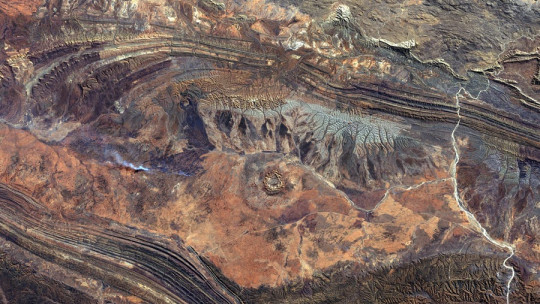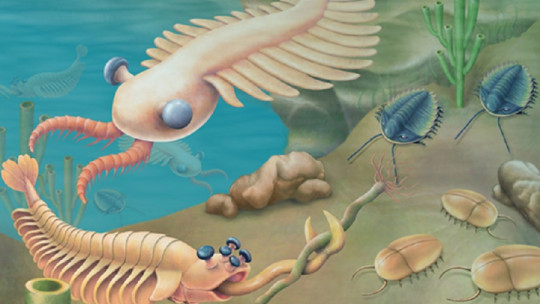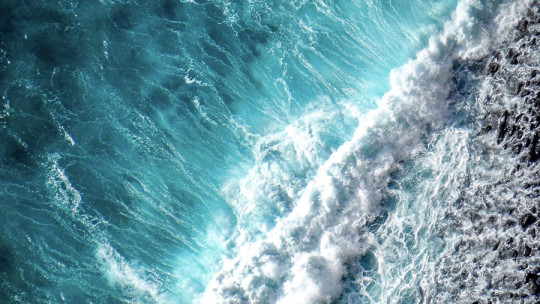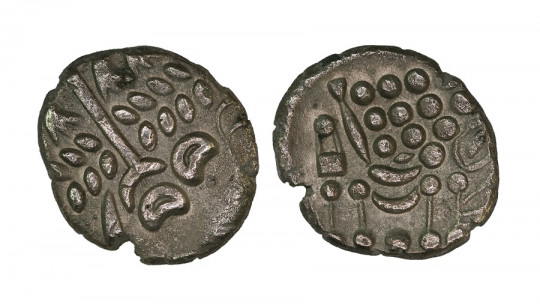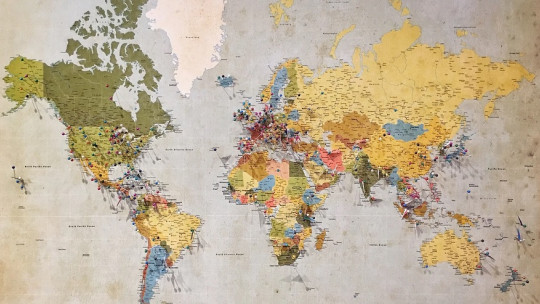Eras are one of the units of time that divide the history of planet Earth, taking into account its geological characteristics.
The division period of each Era is not determined nor is it constant, it presents a great variation in time between each one of them, the end and therefore the beginning of another depending on the occurrence of a relevant fact or event that represents a change in the development of the planet or living beings.
In each temporal unit there will also be a characteristic type of climate, with representative fauna and flora appearing in the same way, thus allowing the evolution of different organisms to be observed and understood, thus being able to study, for example, from the appearance of the first bacteria to the emergence of the first homo sapiens.
In this article we will see What are Geological Eras, listing and developing the different types of Eras that divide the history of the Earth
What are Geological Eras?
A Geological Era is a unit of time that refers to the different divisions of the Earth’s history according to its geological characteristics that is, according to its structure and composition.
There are different geological times or geochronology, specifically 6 different ones, the Era is placed second, between the Eon, which is the longest temporal unit, and the Period, followed by the Epochs, the Ages and the Chron.
The Eras are not a constant and determined division of time ; This means that each Era will not be constituted by the same period of time, but rather its division will depend on important events and developments that mark the beginning and end of each of these time units, being therefore irregular between them.
Types of Geological Eras
Thus, Geological Time is divided into different temporal units, one of these being Eras, of which ten different types are distinguished. coming from three different Eons In this way, the Phanerozoic encompasses the Paleozoic, Mesozoic and Cenozoic Eras; The Proterozoic is made up of the Paleoproterozoic Era, the Mesoproterozoic and the Neoproterozoic; and finally the Archaic includes the Eoarchaic, the Paleoarchaic, the Mesoarchaic and the Neoarchaic Eras.
The Phanerozoic refers to the most recent Eon, with the Cenozoic being the current Era. At the other extreme we will have the Eoarchaic Era, which will be considered the first, placing its beginning about 3.6 billion years ago, since no older rocks are preserved.
Despite there being no older eras, there are There is an Eon before the Archaic, which is the Hadic, although since there are no rock specimens that date from this time interval, its duration is not known However, it is estimated that it lasted a relatively short time.
Next we will go on to make a more detailed description of each Era.
The Archaic Aeon
Within this first Eon we find the following Geological Eras.
1. The Eoarchaic Era
The Eoarchaic Era It began 4000 million years ago, being considered the oldest Era and ended 3.6 billion years ago, therefore lasting 400 million years.
It is in the Eoarchaic when the earth’s surface begins to solidify, giving rise to the supracortical belt of Isua in Greenland, being the oldest rock formation preserved today and also the constitution of the first supercontinent called Vaalbará.
Likewise, it is worth highlighting from this Era the formation of the earth’s magnetic field and it is believed that the first single-celled organisms such as batteries appeared there, although there is no evidence of this.
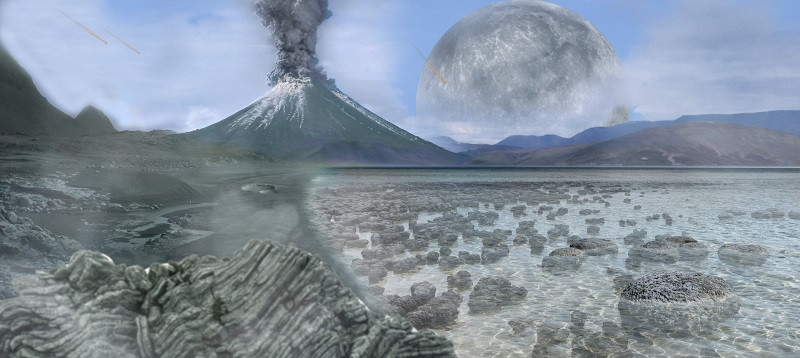
2. The Paleoarchaic Era
The Paleoarchean Era dates back to 3.6 billion years ago and lasted 400 million years, ended about 3.2 billion years ago.
The fossils of the first living beings date from this Era, as is the case of bacteria that perform photosynthesis (but in a different way than today, since oxygen was not produced through this process, it was therefore an anoxygenic process). In the same way, these unicellular organisms used asexual reproduction to reproduce, that is, two living beings are not needed.
3. The Mesoarchean Era
The Mesoarchean Era began 3.2 billion years ago and ended 2.8 billion years ago also lasting 400 million years.
This Era highlighted the separation of the supercontinent formed in the first Era, the Vaalbará, and an expansion of the oceans occurred. In reference to the climate, the first glaciation took place, which is believed to have been a consequence of the metabolism of the first microorganisms.
4. The Neoarchaic Era
The Neoarchaic Era began 2,800 million years ago and lasted 300 million years ending therefore 2500 million years ago.
It is in this Era when microorganisms such as bacteria begin to carry out oxygenic photosynthesis, a process by which oxygen is obtained from carbon dioxide, thus increasing the amount of this chemical element in the atmosphere and allowing the development of living beings. thanks to temperature stabilization.
The Proterozoic Eon
This Eon is characterized by the appearance of the first complex life forms, as we will see.
5. The Paleoproterozoic Era
The Paleoproterozoic Era lasted 900 million years, making it the longest Era having its beginning 2500 million years ago and ending 1600 million years ago.
The most notable events of this Era were the stabilization of the continents for the first time the supercontinent Columbia was formed, and the massive production of oxygen thanks to the process of photosynthesis (this fact meant that anaerobic organisms that did not consume oxygen became extinct).
- You may be interested: “The 3 types of bacteria (characteristics and morphology)”
6. The Mesoproterozoic Era
The Mesoproterozoic began 1,600 million years ago and ended 1,000 million years ago thus hosting a period of 600 million years.
As notable facts, after the division of Columbia the supercontinent Rodinia was formed, and living beings began to reproduce sexually ; This means that the offspring had genetic material from their two parents and therefore this led to a more complex evolution and development of the organisms.
- Related article: “The 8 types of reproduction and their characteristics”
7. The Neoproterozoic Era
The Neoproterozoic It began approximately 1 billion years ago with an approximate duration of about 539 million years, in this way we can know that it ended about 541 million years ago.
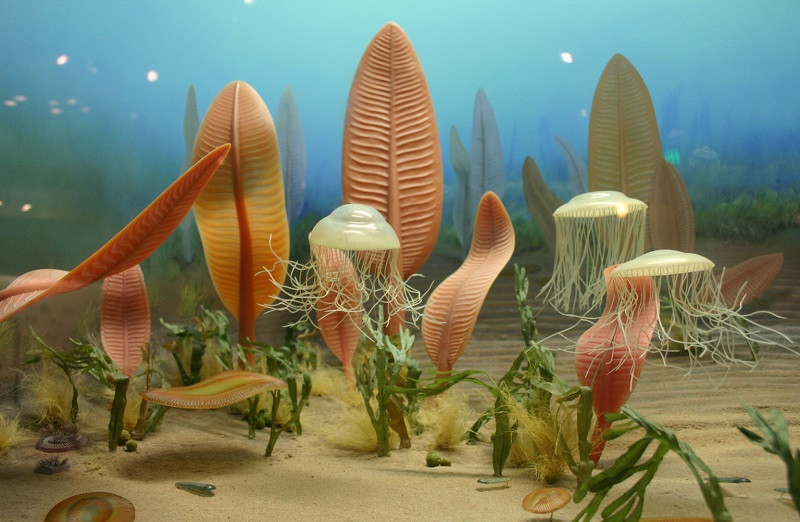
This Era is divided into three periods, with the Cryogenic Era being when the most extensive glaciation recorded on Earth developed. At the end of this Era the land surface would form a new supercontinent called Pannotia.
In reference to organisms, this Era stands out for the appearance of the first multicellular animals also developing the first aquatic animals.
The Phanerozoic Eon
The last Eon contains the following Geological Eras.
8. The Paleozoic Era
The Paleozoic Era began approximately 541 million years ago and ended 252 million years ago ; It lasted more or less 290 million years. This Era spans from the division of the Supercontinent Pannotia to the creation of the great supercontinent Pangea, which was made up of the largest land area on the planet.
Regarding the evolution of the fauna, at the beginning of this temporal unit animals with a shell and exoskeleton begin to develop the great reptiles already appearing at the end of this Era.
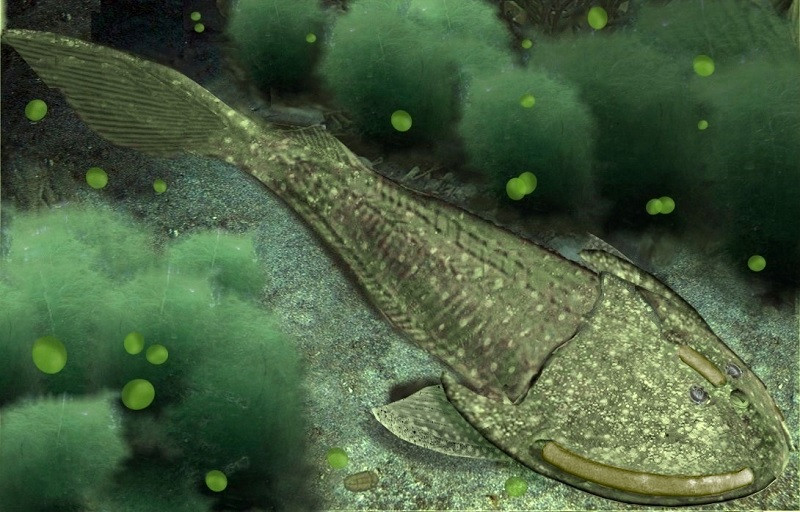
We can divide the Paleozoic into lower ones (with a warm climate at the beginning, although it ended with a glaciation that led to a great mass extinction); The climate recovered and the Middle Paleozoic began, which was much more stable and ended with the extinction of most of the vertebrates; and finally the Upper Paleozoic, in which glaciations also appeared, although these were more extreme than the previous ones, concluding with another mass extinction.
9. The Mesozoic Era
The Mesozoic Era, Also known as the Age of the Dinosaurs, it began 251 million years ago and lasted 186 million years, ending 66 million years ago As we already mentioned, the Paleozoic Era ended with the appearance of the first reptiles, these being the most characteristic animals of this new Era, not only due to the presence of dinosaurs, but also turtles and crocodiles.
Throughout this Era, the supercontinent Pangea began to divide, thus acquiring a distribution of continents more similar to the current one. In reference to the climate, this was warmer than we have today, presenting higher temperatures.
It is believed that at the end of the Mesozoic the collision of a meteorite with the Earth It caused the climatic conditions to change, decreasing the amount of food and thus affecting the large reptiles, leading to a mass extinction, called the Cretaceous-Tertiary Mass Extinction, with birds and mammals surviving that little by little evolved.
- You may be interested: “Lucy the Australopithecus: this was the fossil that changed everything”
10. The Cenozoic Era
The Cenozoic Era is the current one It began 66 million years ago and is also known as the Age of Mammals. He Homo sapiensour species, has its origins 200,000 years ago.
The Cenozoic is when the continents definitively acquire their current place , although tectonic movements continue to occur; This means that the continents continue to move.
The climate progressively cooled and as we have already said, after the extinction of the dinosaurs, it was the mammals that gained more strength, evolving and finally giving rise to the genus Homo.



